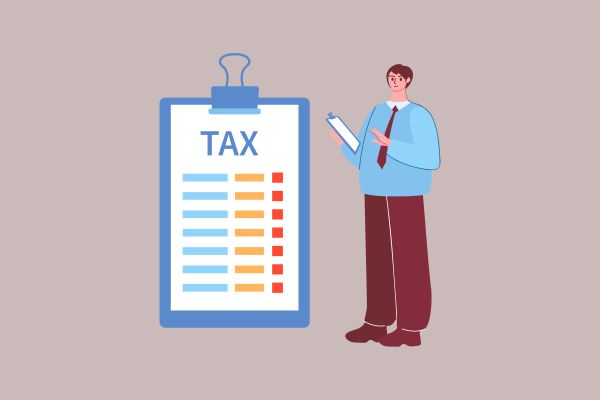Risk Thresholds for Assessing and Classifying Taxpayers - How Are They Established? What Is the Periodic Assessment and Classification Timeframe?
What is the enterprise risk threshold?
Based on the provisions of point a, clause 1, Article 3 of the Process issued according to Decision 575/QD-TCT in 2023 regulating the enterprise risk threshold as follows:
Risk threshold: A specific range of points issued based on the total risk points of the taxpayer or the number, percentage of taxpayers according to the list classified from the taxpayer with the highest risk points to the taxpayer with the lowest risk points.
The risk threshold is used to classify risk for all evaluated taxpayers.

How is the risk threshold used to evaluate and classify taxpayers built? What is the periodic evaluation and classification time?
What are the general principles to evaluate and classify taxpayers? When is the periodic evaluation and classification time?
Based on the provisions of clause 1, Article 6 of the Process issued according to Decision 575/QD-TCT in 2023 regulating the general principles for evaluation and classification as follows:
Evaluation and classification of taxpayers
1. General principles
The analysis, evaluation, and classification of taxpayers with risk signs in management and use of invoices are automatically conducted on the QLRR application according to each tax authority directly managing the taxpayer (NNT). In cases where the QLRR application lacks information to determine the taxpayer with risk signs, the application of QLRR is manually conducted through a proposal or issuance document signed by the competent person applying tax management measures as prescribed.
The evaluation and classification of taxpayers are conducted based on risk management information updated on the QLRR application at the evaluation time and the criteria, indices analyzing information to evaluate taxpayers with risk signs in the management and use of invoices issued by the General Department of Taxation.
The evaluation and classification of taxpayers are conducted periodically on the 25th of every month.
The evaluation and classification of taxpayers are conducted according to the general principles as regulated above.
Moreover, the periodic evaluation and classification time for taxpayers are conducted on the 25th of every month.
How is the risk threshold for evaluating and classifying taxpayers built?
Based on the provisions of clause 2, Article 6 of the Process issued according to Decision 575/QD-TCT in 2023 regulating the risk threshold for evaluating and classifying taxpayers as follows:
The risk threshold is the basis for classifying the risk of taxpayers into three categories: high risk, medium risk, and low risk.
- The classification of high risk follows two (02) methods:
+ Absolute number method: The number of taxpayers with high-risk signs is specifically allocated to each tax authority according to the number of taxpayers or total risk points.
+ Relative number method: The number of taxpayers with high-risk signs is determined by percentage calculated on the number of active taxpayers analyzed within the analysis scope.
- The percentage (number) of taxpayers in the low-risk category corresponds to 50% of the total number of taxpayers, taken from the lowest total risk points upward.
- The percentage (number) of taxpayers in the medium-risk category is the remaining percentage (number), excluding the high-risk and low-risk taxpayers.
In case taxpayers fall within the high-risk threshold but have identical scores, they are evaluated according to sub-criteria indices prioritized in the following order:
| No. | Sub-criterion index || --- | --- || 1 | Number of periods with delayed VAT declarations from high to low. || 2 | The number of changes in headquarters or business location. || 3 | Taxpayers who have changed legal representatives or relocated their business leading to a change in the managing tax authority. || 4 | Within one (01) year from the evaluation time, taxpayers have repeatedly been issued decisions by tax authorities for administrative violations related to tax and invoices. || 5 | Taxpayers with a low ratio of “Total VAT payable/Total revenue from sales and service provision in this period.” || 6 | Taxpayers with a large ratio of “Revenue from sales and service provision this period/Revenue from sales and service provision in the immediately preceding period.” |
How are taxpayers evaluated and classified?
Based on clause 3, Article 6 of the Process issued according to Decision 575/QD-TCT in 2023 regulating the evaluation and classification of taxpayers as follows:
| Group | Classification Criteria || --- | --- || I | The group of CSTC identifies taxpayers transitioning from using electronic invoices without codes from tax authorities to electronic invoices with codes from tax authorities.
The Inspection – examination department reviews, checks if necessary, and lists the taxpayers transitioning to applying coded electronic invoices according to form 01-QLHD/QTr-QLRR, submitted to the tax authority leadership for approval before the 5th of every month. The Tax Department is responsible for summing up the list of taxpayers managed by the Tax Branch and the Tax Department. || II | The group of CSTC identifies taxpayers with risk signs requiring checks on invoice management and use.
The list of taxpayers with risk signs is made according to form 02-QLHD/QTr-QLRR issued according to Decision 575/QD-TCT in 2023. || III | The reference index group identifies taxpayers with risk signs requiring checks on invoice management and use.
Depending on the management requirements of each period, the tax authority can use the reference index group to identify taxpayers with risk signs requiring checks on invoice management and use to perform risk analysis on taxpayers.
The tax authority can use one or several indices in Group III to analyze, evaluate, and identify taxpayers with high-risk signs. For this CSTC group, the tax authority executes input for the CSTC parameters, and the QLRR application helps analyze risks and filter taxpayers with risk signs within one of the indices of Group III to list taxpayers that need reviewing and checking without going through risk scoring.
The list of taxpayers with risk signs is made according to form 03-QLHD/QTr-QLRR issued according to Decision 575/QD-TCT in 2023. |
LawNet